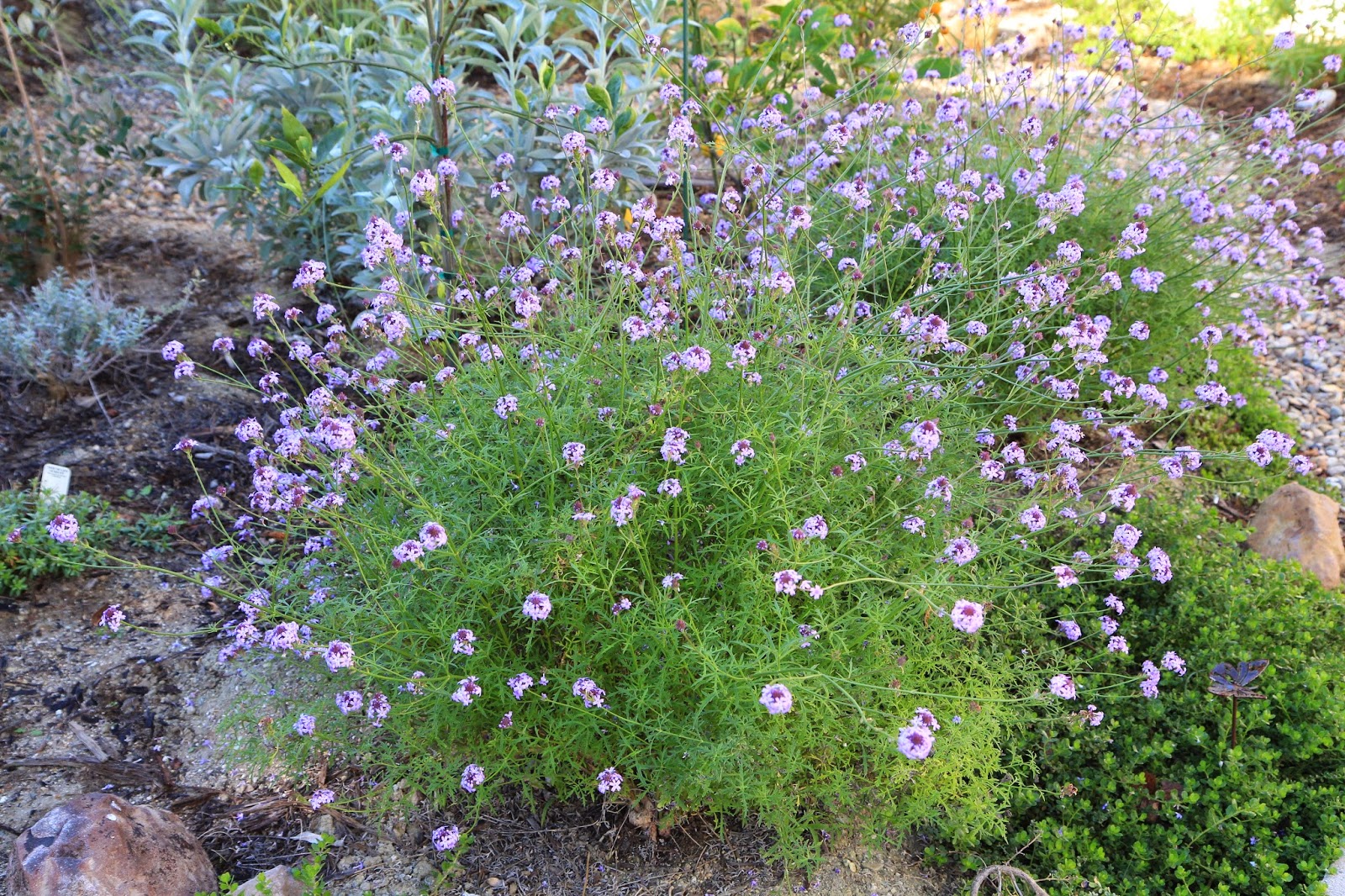I offered to help design native gardens for a couple of people. When we talked it through, they realized they wanted a low-water garden, not a CA native garden. They had already seen some showy low-water plants, and wanted to include those. They were not on board for the more limited palette, "counter-intuitive" water needs, and iffy availability of CA natives. Well, low water is a great goal!
 |
| Some people just want to have fun with succulents and exotics.
Nothing here is native to California.
|
Since this is a native garden blog, here are reasons to go native:
From the CA Native Plant Society From a San Diego landscaper who specializes in natives
Many low water gardens (native or otherwise) are done badly. The advice I followed for my native garden applies here: find a successfully growing garden in your neighborhood that uses many of the plants you want to use. Find out how that gardener planted, weeds, and waters. Do the same. Weed control is crucial in the first couple of years. (If you are replacing Bermuda grass, my condolences.) Trimming, at minimum once or twice a year, is required. And plants may not grow predictably; be prepared for a little removal and repair each year. Here are some low-water gardens in my neighborhood.
When you think of a low water garden, you may envision a desert garden:
 |
| This desert-like garden is a favorite of mine. (Click on the pictures once to expand.) |
When well-executed, this striking effect works through much of California. The plant material is probably from all over. Wild coastal California does not look like this (well, maybe the rocks.)
An effect more like our local Coastal Sage Scrub can be created using Southwestern, Mediterranean and/or Australian plants. A few rocks and a decomposed granite path add to the effect. It may require quite a bit of trimming to stay looking good.
 |
| I enjoy passing by Lis's garden. |
Most people like some taller bushes and trees. Fruit trees compatible with a low water garden includes citrus, pomegranate, and fig. Grapes work too.
examples all by one landscaper. Be sure to choose a style, and plants, compatible with your yard's growing conditions (sun or shade, soil type, weather, and frost zone.) My goal was to evoke the coastal hills, but with more flowers.
 |
| Sages and sagebrushes, intergrowing plants, and slopes help me create a sense of coastal hills, with some extra flowers. |
Which low water garden styles do you like, and why? If you aspire to a low-water garden in Southern California, here is a great website to help you learn how: The BeWaterWise Garden Spot. Elsewhere, your local water district may have similar resources. If you want native too, try my favorite website: Las Pilitas nursery. Good gardening!
To subscribe to this blog,
click here.
To use text or photos from this blog, click here. To share this post (do share!) click on the appropriate tiny icon below (email, facebook, etc.)
To use text or photos from this blog, click here. To share this post (do share!) click on the appropriate tiny icon below (email, facebook, etc.)


























































